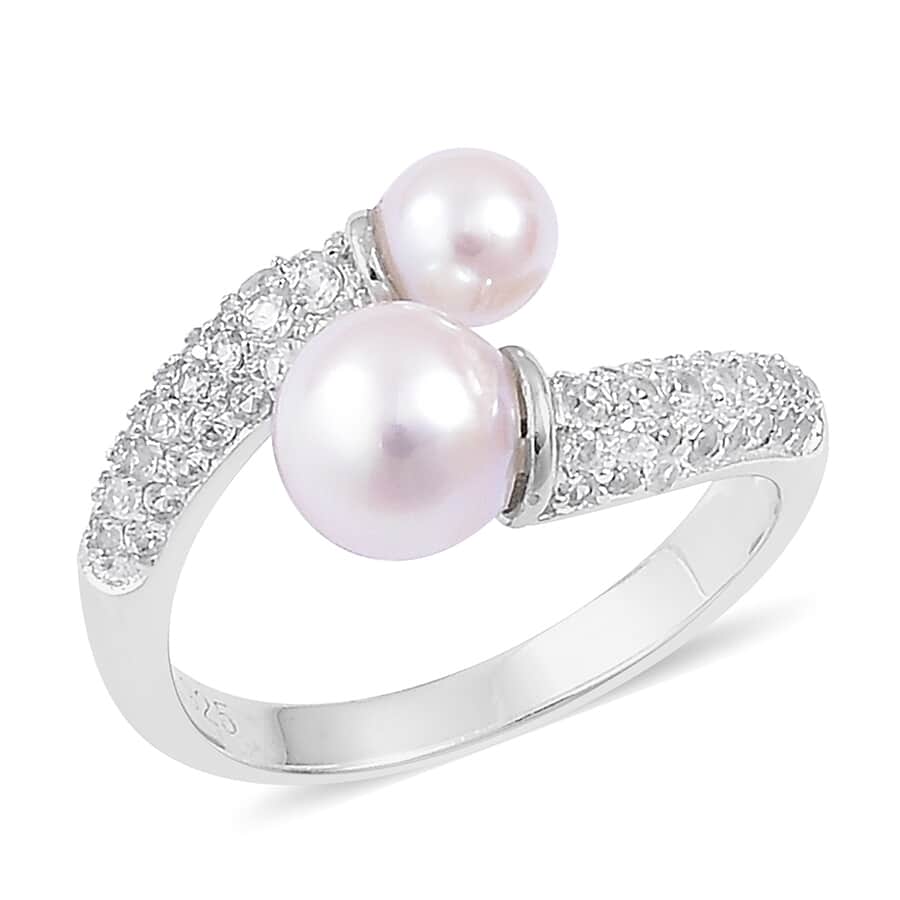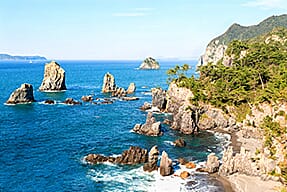What is CULTURED AKOYA PEARL GEMSTONE?
A modern classic, cultured Akoya pearls represent some of the finest pearls from the past century.

Pearls are one of the classic gemstones, and have been treasured for centuries, if not millennia. Once only under the purview of the elite and powerful, modern methods and creative solutions means this exotic, organic gemstone is now available to all. Akoya pearls are the definitive pearl from the past one hundred years, and with good reason.
What Color is an Akoya Pearl?
There’s a reason why we most commonly think of white pearls when we talk of them. Akoya pearls are known for a reliably white to cream bodycolor within the industry. At Shop LC, you’ll find this same level of consistent quality. Our cultured Akoya pearls are white, often with an overtone of pink or silver for extra flair. These are the most popular combinations of color for this pearl, and it’s our delight to make them available for you.
Other Akoya Pearl Qualities
Pearls are organic gemstones. While mineral-based jewels are described by the Four C’s of color, cut, clarity, and carat, pearls are graded along their own unique quality factors. Besides color, with pearls, you should also consider size, shape, luster, surface condition, and nacre quality.
Akoya pearls occur in a range of sizes, measuring anywhere from 2mm to 11mm across. They tend to average around 6mm to 8mm in size. Specimens over this size are scarce, and drive up the price of these pearls. With Shop LC, you’ll find a selection of Akoya pearl jewelry with pearls between 4mm to 8mm.
While we might picture the ideal pearl as a perfectly round sphere, this is not always the case! As an organic gemstone, pearls occur in a variety of exciting and unusual shapes. Despite this, the classic round shape remains the most popular. And thanks to modern techniques, rounds are reliably grown by pearl farms. The majority of Akoya pearls are spherical, accounting for between 70 to 80-percent of the harvest. The industry applies this term to any pearls that are round or near-round. Both will look round on inspection, requiring instruments and training to distinguish the two better. Your Shop LC Akoya pearls will be near-round in shape.
Luster is a measure of your pearl’s ability to reflect surrounding light, measuring on a scale of five levels. Akoya pearls fall within the top to the middle part of the spectrum, with a grading of excellent, very good, or good. Pearls at Shop LC possess a good luster, placing them in the middle of the scale. This means they brightly reflect light, but the images might be blurred and hazy.
Surface condition describes if any visible imperfections are present on the surface of the pearl. Even though these jewels are raised under controlled conditions, their organic nature means that some deviation happens. Many are clean, with no visible blemishes. Some might have light or moderate spotting.
Nacre is the organic material that forms your pearls. In cultured pearls, it develops around a core that is deliberately and carefully inserted. The nacre of the pearl is responsible for many of your pearl’s qualities, and especially its luster. Shop LC Akoya pearls have an acceptable nacre.
Combined, these create a beautiful and affordable genuine cultured Akoya pearl gemstone!
Are Akoya Pearls Treated?
Akoya pearl cultivation is over one hundred years old. During its long history, several unique processes have risen during the creation of these pearls. Cultured Akoya pearls undergo a traditional and proprietary Maeshori treatment to improve their appearance.
First, pearls will be cleaned by immersing them in a solvent. This is usually methyl alcohol. The treatment causes the nacre to contract and tighten, improving the pearl’s luster.
Next pearls undergo bleaching to remove any stains or remaining organic matter. The cultured pearls are immersed in diluted hydrogen peroxide. Combined with a low heat, under tightly controlled conditions, the pearls will be treated to improve their color. At this stage, an additive may be used to dye the pearls to achieve the famous pink overtone for which they are known.
The last stage is processing through tumbling. Tumbling improves the luster of the pearls. Each of these steps is part of the traditional treatment methods used for over one hundred years.
Who Should Wear Akoya Pearls?
Pearls are an iconic jewelry accessory that everyone aspires to own. Rising in popularity since the 1920’s, many see cultured Akoya pearls as the premier pearl gemstones. Their delicate size and pastel colors are perfect for any occasion that only requires a touch femininity. For many professional working women, a strand of pearls shows that she has arrived. It’s a symbol of strength and one of the most popular self-purchases for many women.
Choose cultured Akoya pearls if you prefer a classic pearl look, soft hues, or dainty jewelry.
Is Akoya Pearl a Birthstone?
• There are three modern birthstones for June. They are alexandrite, moonstone, and pearl. While spoiled for choice between three gems, pearls are a great option for timeless and classic birthstone jewelry. Pearl does not have an association with the tropical zodiac.
• Besides being a birthstone, pearl jewelry is also the traditional gift for the 3rd wedding anniversary.
The Tears of Ningyo
• Many cultures tell tales of mermaids, and the Japanese are no exception with their stories of ningyo. However, their depictions are often quite different. While still half human and half fish, the ningyo are often more bestial looking, with simian features and sharp teeth.
• Many tales of the ningyo attribute special properties to these creatures. Several stories indicate that consuming their flesh stops the aging process and provides long life. Unfortunately, these individuals become cursed and come to sad ends.
• Other stories tell of ningyo generosity. Many stories describe the ningyo becoming caught in fishermen’s nets. Their tears fall as pearls. When kind-hearted fishermen release them, they’re deeply rewarded. Most often they receive chests full of exquisite pearls for their compassion!
The Jewel of Venus
•In Roman mythology, Venus is the Goddess of Love. Pearls were one of her symbols, and many properties were attributed to their use. Women would wear them in their hair to increase their chances in romance, and it was also used in creating love potions. A dissolved pearl would be mixed into a glass of wine, and given to the person of one’s desire. Once drunk, the potion would ensure affection was returned.
GemGPS
Location: Japan
Pearls have been cultured for decades, and the cultured pearl industry in Japan traces its roots to the early years of the 20th century. Akoya pearls are only raised in two countries, China and Japan. While Chinese cultured pearls are rising in popularity and quality, the Japanese long ago mastered the cultivation of these gorgeous organic gems. Shop LC sources our supply of cultured Akoya pearl from Japan.

How are Akoya Pearls Harvested?
The process for creating cultured pearls is a long and arduous journey. Akoya pearls are only produced by one kind of mollusk, Pinctada fucata. These creatures must mature for two years before they can create pearls. Once mature, a core will be inserted into the oyster, known as a nucleus. Due to their size, Pinctada fucata can only produce one pearl at a time, unlike many other saltwater and freshwater pearl oysters. After culturing, only 25 to 30-percent of pearls are suitable harvesting. Harvested pearls are treated through the traditional Maeshori methods described above.
- Ranks 2.5 to 4.0 on the Mohs scale of hardness.
- Akoya pearls possess a white to cream bodycolor, and some may have an overtone of pink or silver.
- Shop LC sources our supply of Akoya pearl from Japan, their traditional home.
- Akoya pearl undergoes traditional Maeshori treatments of bleaching and dyeing.




